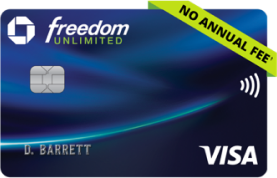![]()
![]()
![]()
![]()
Loan Or Credit Card Decide Wisely For You
Loan Decision is a crucial part of personal finance management.
In this article, we will explore the key differences between loans and credit cards, helping you make informed choices based on your financial needs.
We will dive into how personal loans are designed for larger, one-time expenses while credit cards provide flexibility for everyday purchases.
Additionally, we’ll examine the interest rates associated with each option and guide you on choosing the right solution based on your specific financial situation.
Understanding these factors can significantly impact your financial well-being and future planning.
Facing the Borrowing Crossroads
Choosing between a loan and a credit card can put consumers at a critical financial crossroads where one misguided move may ripple into long-term consequences.
Personal loans generally offer a fixed lump sum with a structured repayment schedule, making them ideal for financing larger one-time expenses like debt consolidation or home repairs.
On the other hand, credit cards offer revolving credit, giving users the flexibility to make everyday purchases—but often at the cost of higher interest rates and potential debt cycles.
According to UKFCU’s financial insights on consumer lending, personal loans typically have lower APRs, making them a valuable option for those looking to borrow strategically.
Still, the accessibility of credit cards makes them tempting in moments of urgency, yet borrowers often underestimate the impact of carrying balances month to month.
Failing to pay off in full opens the door to compounding interest, which can be financially draining over time.
Knowing when to choose structured repayment over revolving credit depends on the borrower’s goals, discipline, and financial forecast.
Understanding these nuances is not just helpful—it’s vital to borrowing wisely.
Personal Loans for Planned Expenses
Personal loans offer a reliable way to fund significant, planned expenses without the unpredictability often associated with revolving credit lines.
These loans provide a lump-sum amount that you repay over a defined term, making them especially useful for financing projects such as home upgrades, medical expenses, or consolidating multiple debts into one manageable payment.
Because they’re unsecured, you don’t need to offer collateral, which allows quick access to funds with fewer barriers to entry
What makes personal loans particularly attractive is their structured nature.
With fixed interest rates, borrowers experience consistent monthly payments throughout the loan term, which creates a high level of financial predictability.
LendingClub personal loans and others like them offer straightforward terms and flexible loan amounts, making this option ideal for borrowers who want control and clarity when planning costs in advance
- Fixed rate stability.
- Predictable monthly payments.
- No collateral required.
- Flexible loan terms from 12 to 84 months.
- Ideal for debt consolidation or home improvement.
- Quick access to funds upon approval.
Credit Cards for Everyday Flexibility
Credit cards offer a dynamic and essential resource for managing daily expenses with ease.
Whether you’re grabbing your morning coffee, paying for streaming services, or stocking up on essentials at the grocery store, using a credit card simplifies transactions by eliminating the need for constant bank withdrawals.
Their flexibility allows you to complete purchases instantly while organizing your finances around billing cycles.
This ease of use becomes even more powerful through features that incentivize everyday spending.
- Earn cash-back on groceries
- Access purchase protection on high-value items
- Build credit through responsible use
- Unlock travel and dining rewards
- Receive fraud liability protection
It’s important to recognize that this flexibility comes with responsibility.
When you carry a balance beyond the grace period, variable interest rates can quickly multiply your debt.
This transforms convenience into a financial burden.
According to Forbes Advisor on flexible credit cards, this risk becomes more pronounced with flexible-limit cards, which may encourage higher spending.
Always monitor spending habits and aim to pay off balances monthly
Interest-Rate Snapshot: Loans vs. Cards
When comparing interest rates between personal loans and credit cards, the differences are substantial and directly impact the total cost of borrowing.
Personal loans typically feature fixed interest rates, helping borrowers predict their long-term expenses.
On the other hand, credit cards often carry variable interest rates that fluctuate based on market conditions, which can make managing repayment more unpredictable.
| Type | Typical Interest Rate | Notes |
|---|---|---|
| Personal Loan | 6% – 18% | Usually fixed; better for good credit |
| Credit Card | 18% – 25% | Usually variable; higher potential cost |
While both borrowing options serve different needs, rate predictability makes personal loans suitable for structured, long-term budgeting.
In contrast, the rate variability of credit cards makes them more flexible but often riskier over time, especially if balances aren’t paid in full monthly.
For more details on borrowing options, LendingTree offers an excellent comparison at LendingTree personal loan vs. credit card comparison
Matching the Tool to Your Financial Goal
When aligning your financial strategy with your personal goals, recognizing the nature of the expense is crucial.
If you’re tackling a sizable, one-time cost—like consolidating debt, funding home renovations, or covering medical bills—a personal loan might be the better route.
According to LendingClub’s financial tools, loans provide structured repayment terms and often come with lower interest rates when compared to high-interest credit cards.
This makes budgeting more manageable, especially for long-term purchases.
However, for repeatable everyday buying—like groceries, fuel, or subscriptions—a credit card offers more flexibility.
It allows for revolving credit and the potential to earn rewards or cash back.
Just be sure to pay the balance in full to avoid excessive interest.
Choose a credit card that aligns with your spending habits and goals, such as travel perks or zero interest intro offers.
You can explore tailored options via credit card guides from Hickory Point Bank.
Never borrow without a repayment plan—that rule is non-negotiable.
Whether it’s a loan or a credit card, aligning your choice with both your current financial capabilities and your future income projections prevents overextension.
Always consider the urgency of your need as well.
Immediate unplanned expenses might warrant short-term credit, but planned expenses are best financed with structured loan products that ensure clarity and stability in repayment.
In conclusion, understanding the differences between loans and credit cards is essential for effective financial management.
By making informed loan decisions, you can better navigate your expenses and optimize your financial strategy.






